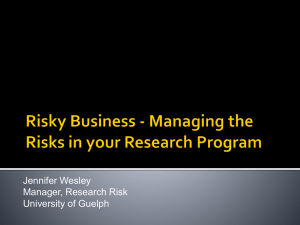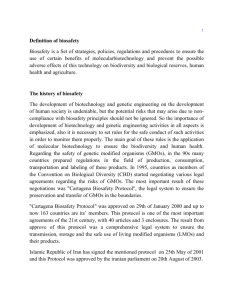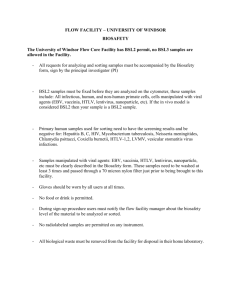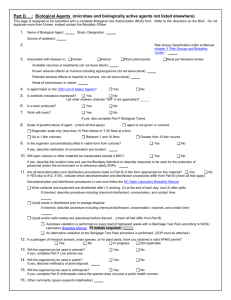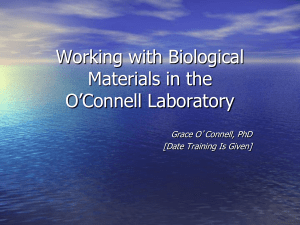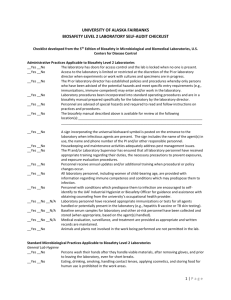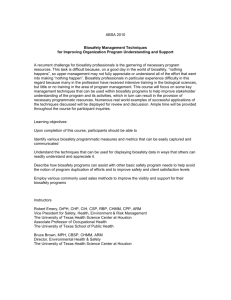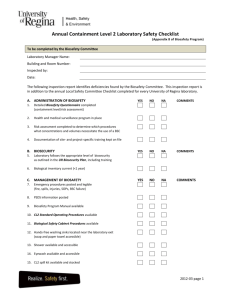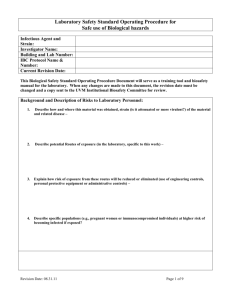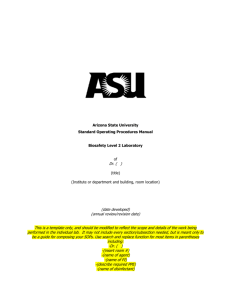Transfers (Select Agents)
advertisement
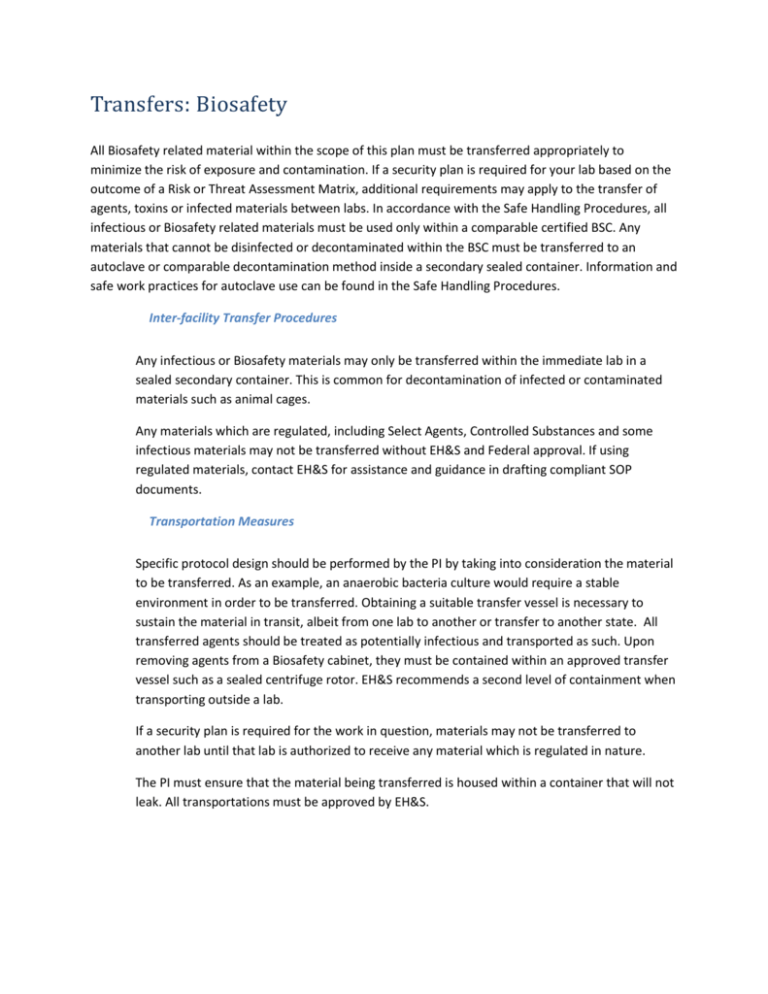
Transfers: Biosafety All Biosafety related material within the scope of this plan must be transferred appropriately to minimize the risk of exposure and contamination. If a security plan is required for your lab based on the outcome of a Risk or Threat Assessment Matrix, additional requirements may apply to the transfer of agents, toxins or infected materials between labs. In accordance with the Safe Handling Procedures, all infectious or Biosafety related materials must be used only within a comparable certified BSC. Any materials that cannot be disinfected or decontaminated within the BSC must be transferred to an autoclave or comparable decontamination method inside a secondary sealed container. Information and safe work practices for autoclave use can be found in the Safe Handling Procedures. Inter-facility Transfer Procedures Any infectious or Biosafety materials may only be transferred within the immediate lab in a sealed secondary container. This is common for decontamination of infected or contaminated materials such as animal cages. Any materials which are regulated, including Select Agents, Controlled Substances and some infectious materials may not be transferred without EH&S and Federal approval. If using regulated materials, contact EH&S for assistance and guidance in drafting compliant SOP documents. Transportation Measures Specific protocol design should be performed by the PI by taking into consideration the material to be transferred. As an example, an anaerobic bacteria culture would require a stable environment in order to be transferred. Obtaining a suitable transfer vessel is necessary to sustain the material in transit, albeit from one lab to another or transfer to another state. All transferred agents should be treated as potentially infectious and transported as such. Upon removing agents from a Biosafety cabinet, they must be contained within an approved transfer vessel such as a sealed centrifuge rotor. EH&S recommends a second level of containment when transporting outside a lab. If a security plan is required for the work in question, materials may not be transferred to another lab until that lab is authorized to receive any material which is regulated in nature. The PI must ensure that the material being transferred is housed within a container that will not leak. All transportations must be approved by EH&S. Transport of Biohazards (not in commerce) When transporting biohazards, particular caution must be given any time an agent leaves the biosafety cabinet. As we have already discussed in the Biosafety plan as well as the Biosafety Cabinet Program, all infectious or biohazard agents must be used inside a biosafety cabinet. Consult these documents for additional information regarding the safe use of a biosafety cabinet. The following safe work practices should be enforced when transporting biohazards. (Does not apply to commerce transport) Use two leak proof containers, including a sealed primary container and a sealed secondary container. The secondary container should be packed with absorbent materials (paper towels) that are suitable to absorb the total volume inside the primary container. A biohazard sticker must label the secondary container with the agent, lab, and phone number. Avoid using glass containers or equipment, use plastic whenever available. Sealed plastic vials should be transported within a sealed, labeled plastic bag. If glass containers must be used, place them in a padded, rigid container suitable for transport. No transfers should be made off campus prior to consulting with EH&S.
